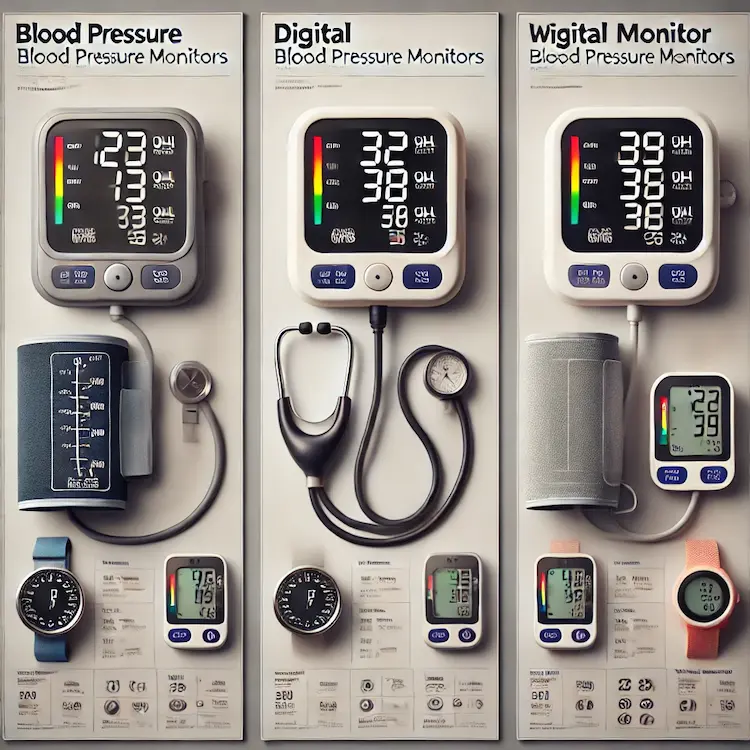How to read blood pressure accurately at home is crucial for early detection of hypertension and cardiovascular risks. The sphygmomanometer, or sphyg, is the primary tool used to measure blood pressure. Understanding how to use it correctly ensures accurate readings and better health management.
This guide will explain:
- The importance of blood pressure monitoring
- Different types of blood pressure monitors
- Step-by-step instructions for accurate readings
- Common mistakes and how to avoid them
- Key insights based on medical research
Why Blood Pressure Monitoring Matters
Blood pressure is a vital indicator of cardiovascular health. High blood pressure (hypertension) increases the risk of stroke, heart attack, kidney failure, and other health issues. Regular monitoring helps:
- Detect early signs of hypertension
- Track the effectiveness of lifestyle changes or medications
- Reduce the risk of cardiovascular diseases
Health and Societal Impact
- Global Hypertension Epidemic: WHO reports that over 1.28 billion people worldwide have hypertension, with many unaware of their condition.
- Economic Burden: The cost of treating hypertension-related complications is billions of dollars annually in healthcare expenses and lost productivity.
- Preventable Deaths: Nearly 10 million deaths per year are attributed to high blood pressure.
Types of Blood Pressure Monitors
There are three main types of blood pressure monitors used at home:
| Monitor Type | Description | Pros | Cons |
|---|---|---|---|
| Manual (Mercury & Aneroid) | Requires a stethoscope and hand pump | Most accurate (if used correctly) | Requires training, difficult for self-use |
| Oscillometric (Digital) | Fully automated, uses air pressure sensors | Easy to use, no training required | Slightly less accurate in some cases |
| Wrist & Finger Monitors | Compact, placed on wrist or finger | Convenient, portable | Higher chance of errors due to positioning |
Which Monitor is Best?
- For most people, an automatic digital upper-arm monitor is recommended.
- For healthcare professionals, a manual sphygmomanometer provides the highest accuracy.
How to Read Blood Pressure Accurately
Step-by-Step Guide
- Choose the Right Cuff Size: The cuff should wrap around 80% of your upper arm. A cuff that is too small or too large will give inaccurate readings.
- Rest for 5 Minutes: Sit comfortably with feet flat on the floor. Avoid caffeine, smoking, or exercise 30 minutes prior.
- Proper Arm Positioning: The cuff should be at heart level. Support your arm on a table.
- Take Multiple Readings: Measure twice per sitting, 1-2 minutes apart, and record the average.
- Measure at the Same Time Daily: Blood pressure fluctuates. Morning and evening readings provide the best consistency.
Common Mistakes & How to Fix Them
| Mistake | Effect on Reading | Solution |
|---|---|---|
| Cuff too tight or loose | Inaccurate readings | Use the correct size and fit snugly |
| Talking during measurement | Raises blood pressure | Stay silent and relaxed |
| Measuring on a full bladder | Can increase BP by 10-15 mmHg | Empty bladder before checking |
| Crossing legs | Raises BP readings | Keep feet flat on the floor |
Understanding Blood Pressure Readings
A blood pressure reading consists of two numbers:
- Systolic (Top Number): Pressure when the heart beats
- Diastolic (Bottom Number): Pressure when the heart rests
Blood Pressure Categories (American Heart Association (AHA)
| Category | Systolic (mmHg) | Diastolic (mmHg) |
|---|---|---|
| Normal | Below 120 | Below 80 |
| Elevated | 120-129 | Below 80 |
| Hypertension Stage 1 | 130-139 | 80-89 |
| Hypertension Stage 2 | 140+ | 90+ |
| Hypertensive Crisis | 180+ | 120+ |
Note: A hypertensive crisis requires immediate medical attention.
Comparing Different Approaches to Home BP Monitoring
There are several ways to track blood pressure effectively:
Single vs. Multiple Readings
- Single readings can be misleading due to temporary fluctuations.
- Multiple readings (morning & night, 7-day average) give a more accurate picture.
Manual vs. Digital BP Monitors
- Manual monitors require skill but offer high accuracy.
- Digital monitors are easier to use and provide quick results.
Telemonitoring & Smart Devices
- Smart blood pressure monitors sync data to apps for trend analysis.
- Remote monitoring allows doctors to track your readings for better treatment adjustments.
why blood pressure monitoring matters
- Calibrate Your Device Annually: Check with a doctor to ensure your monitor remains accurate.
- Monitor Lifestyle Factors: Track diet, exercise, and stress levels alongside blood pressure.
- Use a BP Tracking App: Digital records help identify patterns over time.
Conclusion
Accurate home blood pressure monitoring is essential for managing cardiovascular health. By using the right equipment, following proper measurement techniques, and avoiding common mistakes, individuals can track their BP effectively. Whether using a sphygmomanometer or a digital BP monitor, consistency is key.
Key Takeaways
- Monitor regularly to detect early hypertension.
- Choose the right BP monitor—digital for convenience, manual for accuracy.
- Follow proper measuring steps—rest, sit correctly, and use the right cuff size.
- Avoid common mistakes like talking, crossing legs, or using the wrong cuff size.
- Consult a doctor if readings are consistently high.
Actionable Recommendations
- Buy a clinically validated BP monitor (upper arm preferred).
- Maintain a BP log and share it with your doctor.
- Adopt healthy habits—limit salt, stay active, and manage stress.
- Get annual device calibration for accuracy.
- Consider smart BP monitors for better tracking.




